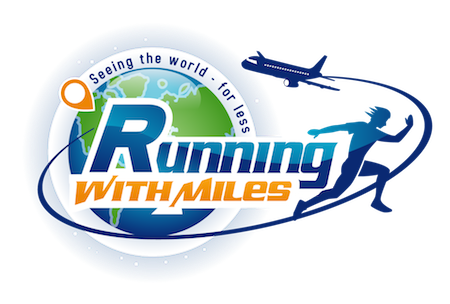Do not forget to enter the giveaway! All you have to do is guess my time – check this post to read about it and enter!
Packing for any trip is an area where people differ greatly in approach and execution. There are some people that pack the hour before and take the bare minimum and others who pack several days before and take everything in their closet. For most people, they pack with an approach that works and that is what they stick with. When it comes to packing for a race, especially packing for an international marathon, there are many different things that we should consider. Here is my approach and what I believe is important.
Packing for an International Marathon
1) Carry Race Gear
First thing is very important – do not check-in your luggage that contains your race gear! Always carry-on your race gear if it is at all possible (and it should always be possible – even on the smallest of aircraft). We currently have some visitors who brought a lot of luggage with them that included some things for us. The airline lost all their bags! Half of them showed up the next day with the remaining half being completely lost for two more days. They had no idea where the bags were. I finally called the airport that showed where the bags were last and asked them to please look around. The bags showed up the next day. That is three days of not having some of the luggage. If you are traveling for a race, chances are you are arriving just a couple of days before the marathon. You do not want your gear arriving late! It is hard to find the same type of running gear that you might find in the US and international expos do not all have the same time of plentiful wares that you come to expect from US expos. So, always plan on carrying your race gear on the plane with you.
2) Prepare for Extremes
Weather has a way of changing quickly. If you are making your international marathon a part of a destination vacation, the last thing you want is to get sick because you ran the marathon without proper apparel for the weather conditions. Another thing to consider is the weather where you are going compared to where you live. If you live in New York (like I used to) and are running the Dubai Marathon (like I did last year), your body is conditioned to the cold temperatures of winter. Traveling to a city with heat like Dubai may make the weather seem even more extreme because your body is used to the colder temps. The same works in reverse – if you are in hot weather and going to a cold marathon, make sure you have a racing jacket/tights with you just in case the weather feels colder than you might normally think.
3) Be Aware of Weight Restrictions
When traveling through Europe and on some Asian airlines as well, there are some fairly strict weight restrictions for carry-ons. The typical restriction is around 17lbs (some may be higher, some lower – make sure you check with your airline). Considering that running shoes could weigh between 1.5 – 2lbs for a pair, pack the rest of your bag accordingly.
4) Powering Your Gear
Many runners, myself included, use a GPS watch when running. I know that I can not run a race without one – I am wholly dependent on it for my splits! There is one big problem with traveling with a GPS watch. Sometimes, things in your bag shift and it can turn the watch on (has happened to me). Now, you arrive at your race destination with a dead watch! Of course, you always have your charger with you so you can just plug it in – except, the power plug is different! When traveling internationally, you will find that the power source is mostly 220 volts and 50hz (while the US is 110 volts and 60hz). Fortunately, our GPS watch chargers can convert that without a problem. The only remaining problem is making sure you have the right plug. To check the plug for your destination, visit here. Adapters can be had very cheaply but many times are poorly constructed. I always find that my AAA store has the best quality adapters at the best price.
5) Pack Gels and Water Bottle
Even if you do not normally carry a water bottle during marathons, you may want to consider carrying one for your international marathon. The reason is that the aid stations may not be spaced the same distances as US marathons or be as well stocked. In addition, you may want a bottle for the starting line in case it is not safe for foreigners to drink the tap water. Many of the local runners will be drinking at fountains or spigots, it may not be the best for you. Even if the water is safe, the water may take some time to get used to. You do not want to use the minutes leading up the marathon getting used to it!
Also, make sure you bring your energy gels. While it is easy to find them at US expos, they are not always plentiful at foreign expos. Also, many international marathons do not offer energy gels on the course. So, bring your own!
6) Paperwork
I know we are not as used to carrying paper around in the digital age, but it is very wise to print out your travel itinerary, hotel confirmations, maps to your race hotel/the starting line/the expo, and race confirmation. There are still some countries that want to see your papers and still more hotels in foreign countries that may have not actually secured your reservation. In those cases, having a printout really helps. Of course, having maps is very helpful!
7) Cash and Cards
Make sure that any credit cards you bring have no foreign transaction fees associated with them. Also, make sure that you have enough of an available balance in the case that something catastrophic happens while you are away. Before you leave, call your credit card company to notify them that you will be traveling with the card (very difficult situation when you go to use your credit card in a foreign country and it gets declined for fraud – and you do not have a phone to call them with!). Also, make sure you carry some cash with you. When I am in the US, I never carry cash on me. It is so easy to use credit cards for everything (and I never want to use a dollar when I can get points) in the US. In other countries, that is not the same. You may find places that only take chip and pin cards (US issued cards with chip are chip and signature, not chip and pin) or places that do not take credit card at all. Take enough cash to cover for transportation and basic needs (I find that I really never need more than $50 on me).
7) Put It All Together
Here is my list of what I bring on international marathon trips.
- Race bottoms (2 pair)
- Race shirt (2)
- GPS watch
- Heart rate monitor
- Charger and spare battery for monitor
- Race shoes
- Race belt
- Sunscreen (in travel friendly sizes)
- Arm sleeves
- Calf compression sleeves
- Race jacket
- Gloves
- Headphones
- Bandaids (for chafing in certain areas)
- Gu Energy gels
- Water bottle
- RoadID bracelet
- Paperwork
- Cash and cards
- Passport
- Camera
- Phone
- Tablet or computer
- Small bag to use for a drop bag
That may sound like a lot, but it all fits inside my carry-on with some room to spare! It is always best to be prepared. 26.2 miles is a long distance to run anywhere – when running it internationally, you want the comfort of knowing that you have what you need without any last minute run to Wal-Mart.
Summary
These are my packing preferences for international marathons. What do you think would make a good addition to this list or are things that you pack when traveling for an international race? Leave them in the comments!








Charles … I am not sure where i am suppose to guess your time —- but I am betting on a 3:58 for you. Good luck! Jack McDermott
Thanks, Jack! I will move it to the right post. I appreciate you taking the time!
[…] one in which you’ve trained (say, from New York to Colorado or from Australia to NYC). Since your body won’t be adjusted to that climate, weather changes may feel more extreme. It’s important to have the right apparel […]
[…] one in which you’ve trained (say, from New York to Colorado or from Australia to NYC). Since your body won’t be adjusted to that climate, weather changes may feel more extreme. It’s important to have the right apparel […]
[…] in which you’ve trained (say, from New York to Colorado or from Australia to NYC). Since your body won’t be adjusted to that climate, weather changes may feel more extreme. It’s important to have the right apparel […]
[…] in which you’ve trained (say, from New York to Colorado or from Australia to NYC). Since your body won’t be adjusted to that climate, weather changes may feel more extreme. It’s important to have the right apparel […]
[…] in which you’ve trained (say, from New York to Colorado or from Australia to NYC). Since your body won’t be adjusted to that climate, weather changes may feel more extreme. It’s important to have the right apparel […]
[…] in which you’ve trained (say, from New York to Colorado or from Australia to NYC). Since your body won’t be adjusted to that climate, weather changes may feel more extreme. It’s important to have the right apparel […]
[…] in which you’ve trained (say, from New York to Colorado or from Australia to NYC). Since your body won’t be adjusted to that climate, weather changes may feel more extreme. It’s important to have the right apparel […]
[…] no qual você treinou (digamos, de Nova York para o Colorado ou da Austrália para NYC). Desde que seu corpo não vai ser ajustado para que o clima, mudanças climáticas podem sentir mais extremas. É importante ter o aparelho […]